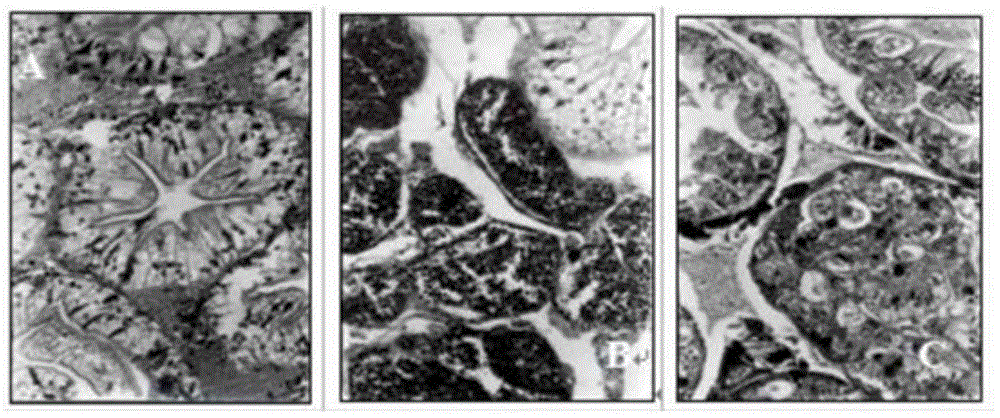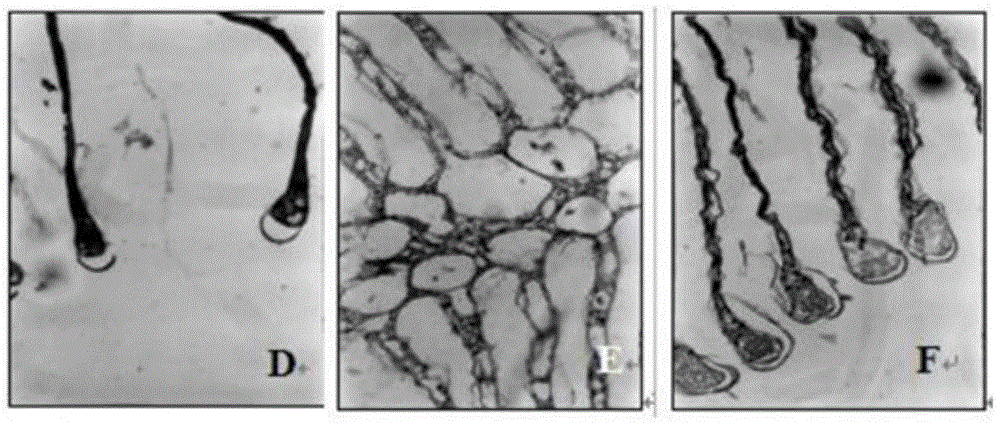Additive for aquatic feed
An aquatic feed and additive technology, applied in the field of aquatic feed and aquatic feed additives, can solve the problems of the occurrence of aquatic animal diseases and the difficulty in controlling the fatality rate, the influence on the growth and reproduction of aquatic animals, and the increase in the incidence of diseases, so as to prevent and treat bacteria. Sexual diseases, reduction of visceral damage in fish, improvement of survival and plumpness
- Summary
- Abstract
- Description
- Claims
- Application Information
AI Technical Summary
Problems solved by technology
Method used
Image
Examples
Embodiment 1~6
[0019] The formulations of aquatic feed additives provided in Examples 1-6 are shown in Table 1.
[0020] Table 1 Formula table of aquatic feed additives
[0021]
[0022]
[0023] The preparation method is as follows: pre-mixing propyl gallate, diatomite and white carbon black, then spraying plant essential oil into it and mixing evenly, and finally mixing evenly with corncob powder to obtain the finished product.
[0024] 1) Antibacterial test:
[0025] Pick an appropriate amount of bacterial stock solution and inoculate it in LB liquid medium, incubate at 28°C for 18 hours, use the inoculated ring to dip the bacterial solution and streak it on the agar plate for 24 hours, pick a single colony and inoculate it in LB medium for 18 hours. After taking it out, measure A with a microplate reader 600 Determine the concentration of the bacterial solution and dilute it with LB medium until the final concentration of the bacterial solution is 10 6 CFU / mL. Take 1ml of the d...
Embodiment 7
[0037] In order to verify the application effect of the present invention, a test is carried out on channel catfish. Channel catfish were divided into control group: feed without antibiotics and additives, and test group: feed additive 0.04% of Example 1. The diet formula is shown in Table 5. There were 8 repetitions in each group, 30 fish in each group, and they were fed 3 times a day. Determine the weight gain rate (%), feed factor, protein efficiency, fatness, visceral weight to body weight ratio, hepatopancreas weight to body weight ratio. The results are shown in Table 6 and Table 7.
[0038] It can be seen from the results in Table 6 that the body weight gain, specific growth rate, feed coefficient and protein efficiency of the test group were significantly improved compared with the control group. The quality of the feed will not only affect the growth rate of the fish body, but also affect the body shape of the fish body. The body shape of the fish body should not b...
Embodiment 8
[0049] In order to further verify the application effect of the present invention, the feed additive of embodiment 1 is tested on catfish. Catfish were divided into control group 1: feed without additives; control group 2: feed with enrofloxacin 10 ppm; test group: feed with 0.02% and 0.05% additives. The diet formula is shown in Table 9. 10 repetitions in each group; 10 fish tails in each group were fed twice a day to measure weight gain (every month, three times in total), feed intake / feed compensation (every month, in total three times), immune performance measurement / Bacteriological determination of survival / mortality.
[0050] As can be seen from the results in Table 10, the addition of this feed additive can improve production performance compared with the control (without antibiotics), and the effect is better than that of the control group 2 (adding antibiotics). From the results of multi-enteric bacteria in each group in Table 11, it can be seen that the addition g...
PUM
 Login to View More
Login to View More Abstract
Description
Claims
Application Information
 Login to View More
Login to View More - R&D
- Intellectual Property
- Life Sciences
- Materials
- Tech Scout
- Unparalleled Data Quality
- Higher Quality Content
- 60% Fewer Hallucinations
Browse by: Latest US Patents, China's latest patents, Technical Efficacy Thesaurus, Application Domain, Technology Topic, Popular Technical Reports.
© 2025 PatSnap. All rights reserved.Legal|Privacy policy|Modern Slavery Act Transparency Statement|Sitemap|About US| Contact US: help@patsnap.com



